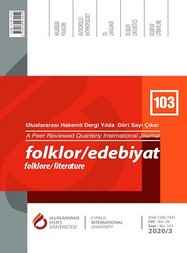Tsengel Tuvalarının Milli Kimlik Oluşumunda Key’at Naadım’ın Rolü
The Role of Key’at Naadam in the Formation of National Identity of Tsengel Tuvans
Author(s): İbrahim Ahmet AydemirSubject(s): Customs / Folklore, Cultural Anthropology / Ethnology, Nationalism Studies, Identity of Collectives
Published by: Uluslararası Kıbrıs Üniversitesi
Keywords: Tsengel Tuvans; Naadam; Hey’at Naadam; national identity; folklore and myth;
Summary/Abstract: This article deals with the role of Hey’at Naadam (Key’at Naadam) in the process of creating national identity of Tsengel Tuvans (Altay Tuvans) living mainly as nomads in Western Mongolia. Naadam is the traditional festival celebrated as a national holiday every year in July across Mongolia. Tsengel Tuvans are Lamaist Buddhists in religion and a different ethnic and cultural identity than the Muslim Kazakhs in the region. Tsengel Tuvans, whose ethnic and cultural identities were not accepted before, started to exist in the region with their own national identities after 1990s. This was a reflection of Perestroika that began in the Soviet Union in the mid-1980s. As a result, Tsengel Tuvans used the traditional Mongolian festival Naadam as a model for the process of creating a national identity through the “common past” and the “revival of the myth”. However, this new process has highlighted the “permanent borders” between the Tsengel Tuvans and teh Kazakh people in this region.
Journal: Folklor/Edebiyat
- Issue Year: 26/2020
- Issue No: 103
- Page Range: 633-645
- Page Count: 13
- Language: Turkish

